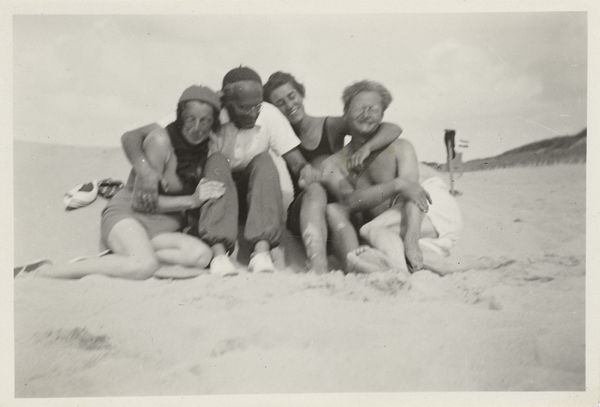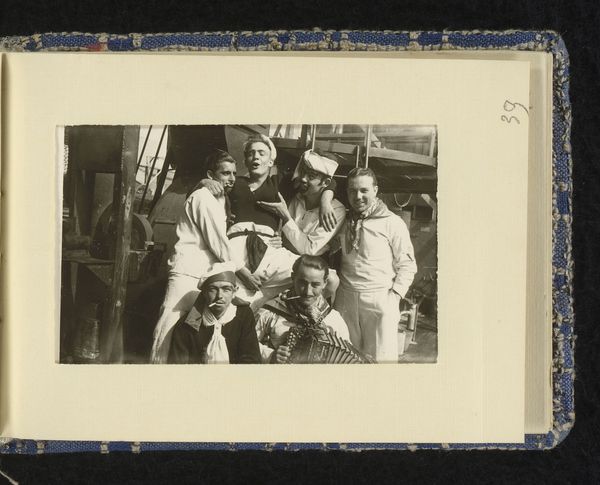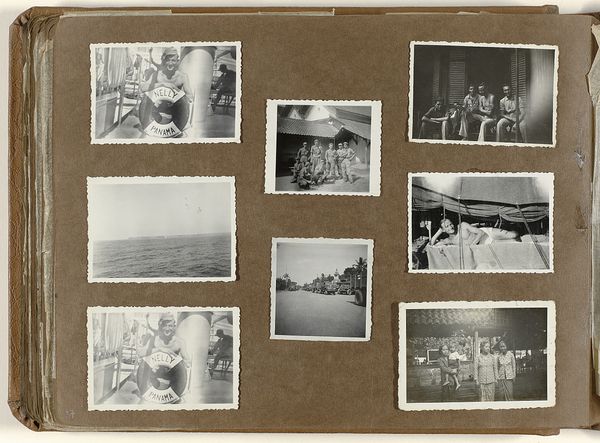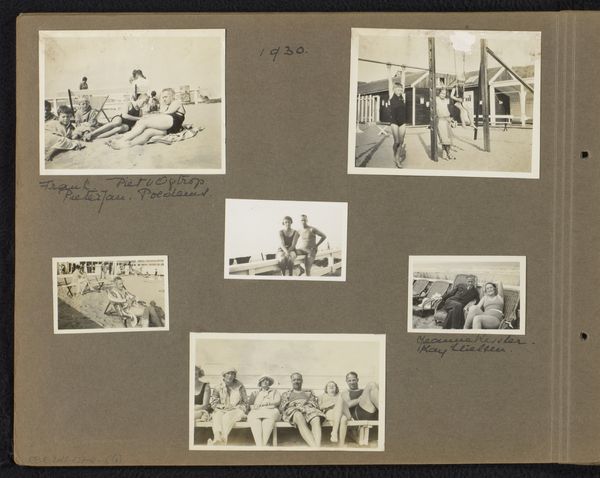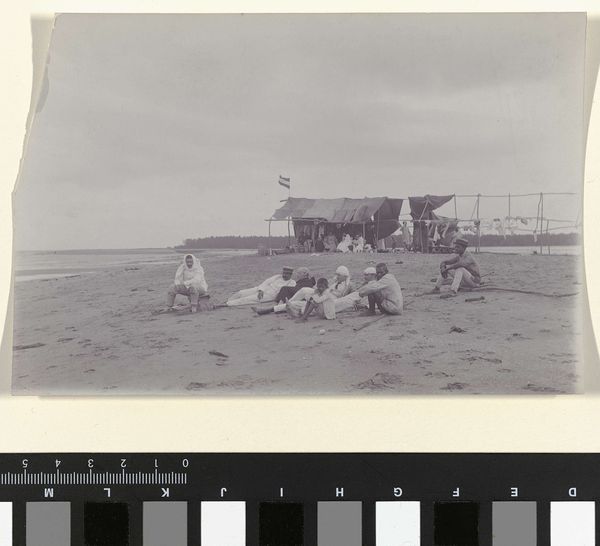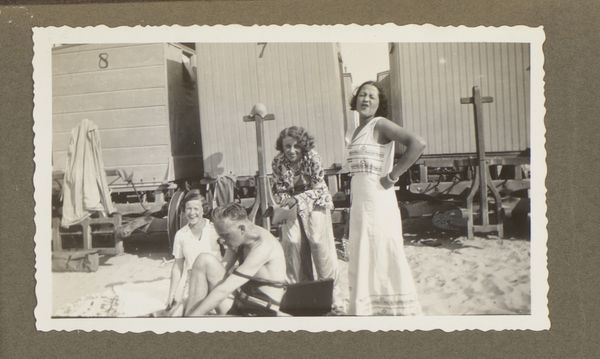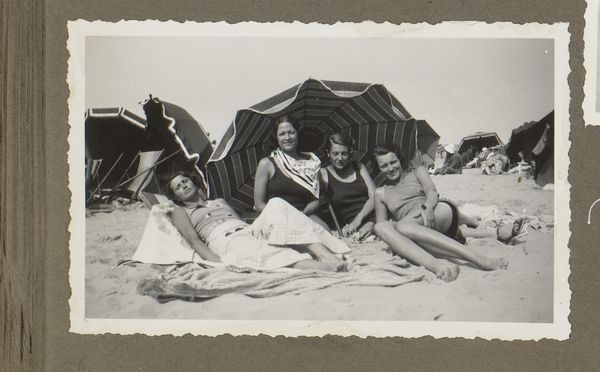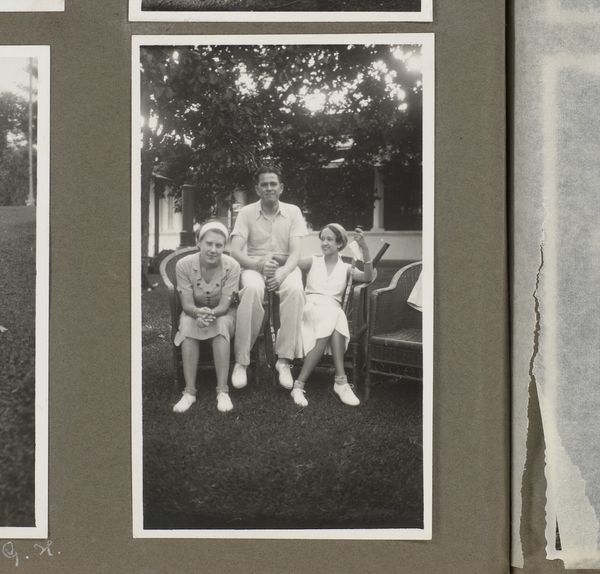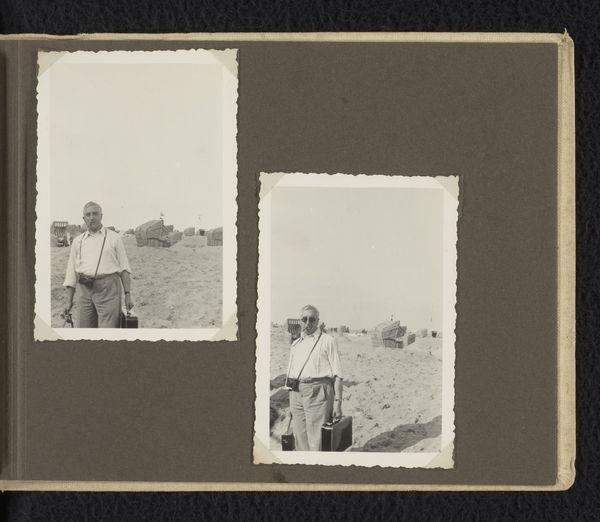
photography, gelatin-silver-print
#
portrait
#
photography
#
coloured pencil
#
group-portraits
#
gelatin-silver-print
#
genre-painting
#
erotic-art
#
realism
Dimensions: height 60 mm, width 85 mm
Copyright: Rijks Museum: Open Domain
Curator: This photograph, a gelatin silver print, captures a group of sailors on the beach at La Rochelle sometime between 1940 and 1943. The artist remains anonymous. What strikes you immediately about this image? Editor: The vulnerability. The intimacy between them on display, in their gazes, how close they all are. And yet, also a strong underlying tension… it’s complex. Curator: It absolutely is. La Rochelle was a U-boat base during the Second World War, which gives these carefree bodies another darker historical context. Notice how they are posed. The relaxed posture, in what one might consider a typical depiction of youthful camaraderie, hides potential underlying social anxiety within this visual culture. Editor: Indeed, what you describe is there. Group dynamics, social constructs of masculinity, and perhaps even… repressed feelings that they portray and repress as they return the gazes of their absent portraitist. But more than their tension, the visual symbols also convey relaxation, an innocent moment that belies tension to the modern eye that already thinks about WWII. Curator: And the beach, itself, takes on multiple symbolic meanings when viewed through a wartime lens. On one hand, it's a space for leisure and escape from duties, on the other hand, it has often functioned as the potential site of military landing and conquest, reflecting on an immediate state of alert within that decade. Editor: Yes. And look at the contrast between the relaxed poses in the foreground, a tight knot of bodies, versus the blurred and solitary figures further along the beach. Almost an opposition, perhaps unconsciously constructed. What is it intended to say to the eye of someone decades later? Curator: The casual realism is deceiving; these men aren’t simply at ease. By considering this group photograph, the location, and the time frame, this anonymous picture provides a fascinating portal into visualizing what must have been the emotional and psychological state of many young men in wartime, struggling between leisure and death, collective spirit and a profound sense of unease, freedom and loss. Editor: Agreed. There is something undeniably enduring about the snapshot beyond its immediacy that goes beyond war photography—perhaps to its emotional ambiguity and historical undertones that continues to resonate even today. Thank you for illuminating the complex layers embedded within this seemingly straightforward picture.
Comments
No comments
Be the first to comment and join the conversation on the ultimate creative platform.

